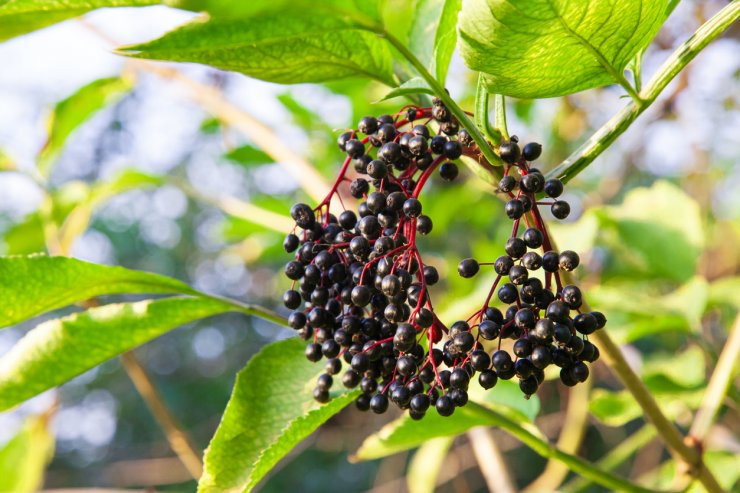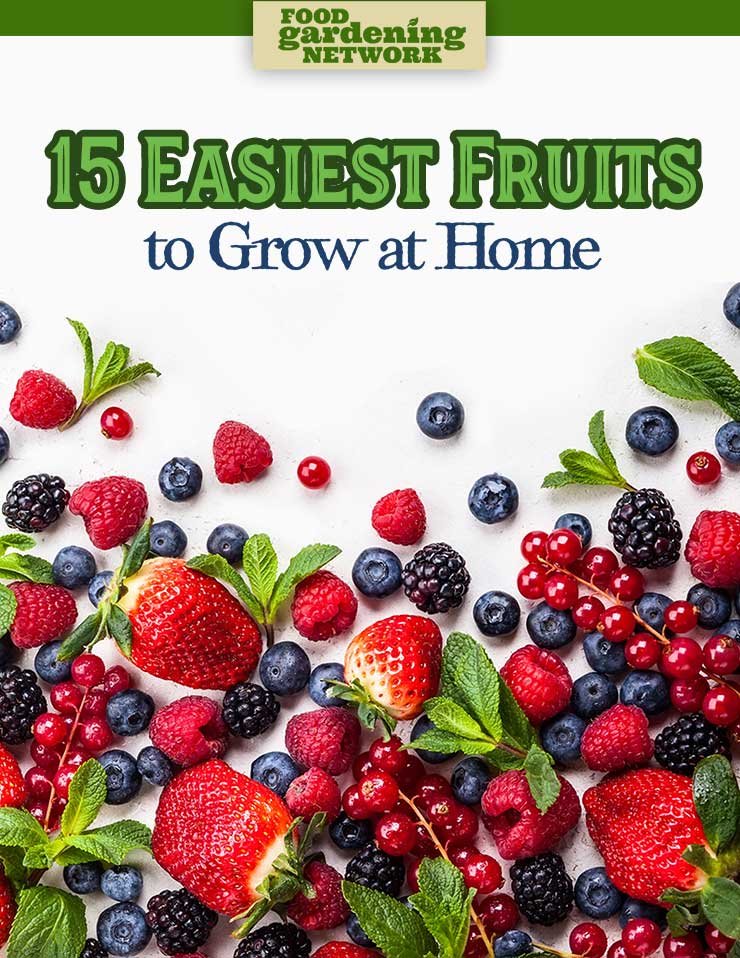
A cluster of elderberry
If you’re thinking about growing elderberries, you’re in good company. Elderberries have a long history of medicinal and culinary uses. Some legends say that the Norse fairy mother lives in the elderberry roots or that the elderberry can ward off evil magic if you plant it near your doors and windows. Across medieval Europe, people believed the elderberry could cure rheumatism, gout, and skin problems.
I can’t vouch for the effectiveness against evil magic, but I can tell you that it’s not hard to find elderberry products in your local health food shop. The berries and flowers are high in antioxidants, vitamins A and C, and a lot of folk remedies recommend elderberry for fighting colds and flu. In fact, a report from the University of Vermont (UVM) suggests that the plant may have anti-cancer properties.
Despite all these positive qualities, there is a VERY important thing to point out here: Do Not Eat Raw Elderberries Or Elderberry Flowers. According to UVM, the plant contains “hydrocyanic acid that is converted into cyanide when consumed by people.” For that matter, it’s best to avoid stems, leaves, and unripe berries altogether. I like growing elderberries for culinary purposes as much as anybody, but I don’t think they’re so good that they’re worth a trip to the hospital.
Explore the easiest fruit to grow at home—indoors or out! Read our FREEBIE 15 Easiest Fruits to Grow at Home, right now!
Your beginner’s guide to growing elderberries
Historically, the elderberry was a wild harvested shrub. What that means for us is that they are fairly easy to grow. There are a number of varieties to choose from, most of which are happy to live pretty much anywhere. One variety you want to avoid, however, is the red elderberry. There is some debate as to whether or not this variety is poisonous even when cooked, but with so many options out there, I don’t see any reason to take the risk.
I should also point out that it’s ideal to plant at least two elderberries shrubs. Since they are open pollinated, you’ll have better results when you have a couple of these shrubs somewhat close together. Not too close, though! Some varieties can grow up to 30 feet tall and can easily spread out to about six feet. And they like to send out shoots. However, they also take well to pruning, so that’s something to consider.
Elderberries grow well in partial shade or full sun, and prefer moist soil. Don’t mistake that for wet soil, though. They can withstand some drought and the occasional extra water, but like most plants, well-drained soil is ideal.
But how do you plant them? Starting with cuttings or seedlings is the most reliable way for growing elderberries. Certainly, the elderberry has thrived in the wild for thousands of years, so you can start with seeds; just be prepared for the possibility that they won’t germinate. Cuttings will root just fine under most circumstances, but you can start them in a small pot with moist soil and plenty of sunshine for practically guaranteed results.
To harvest elderberries, wait until they turn a dark purple, but try to get them before the birds eat them all (and they will). Your best bet is to use pruning shears and cut a cluster of berries right where the fruit begins. You can also use a wide comb to harvest several berries at a time without pulling off the stem. Oh – and elderberries have been used for centuries as a dye, so be sure to wear some gloves and clothes that you don’t mind turning purple.
When you’re ready to use your berries, there’s no shortage of recipes out there. A basic and delicious elderberry syrup is pretty easy. Just simmer one part fresh berries with two parts water for about 30 minutes. I like to add a cinnamon stick, but that’s optional. Mash the berries while they cook. Strain the mixture and add a couple tablespoons of raw honey and a teaspoon of lemon juice. That’s it! Of course, you can add more or less water, honey, and lemon juice to achieve the consistency and taste you want, but this should get you started.
Have you tried growing elderberries? Do you have any success stories or cautionary tales you’d like to share?
Explore the easiest fruit to grow at home—indoors or out! Read our FREEBIE 15 Easiest Fruits to Grow at Home, right now!




